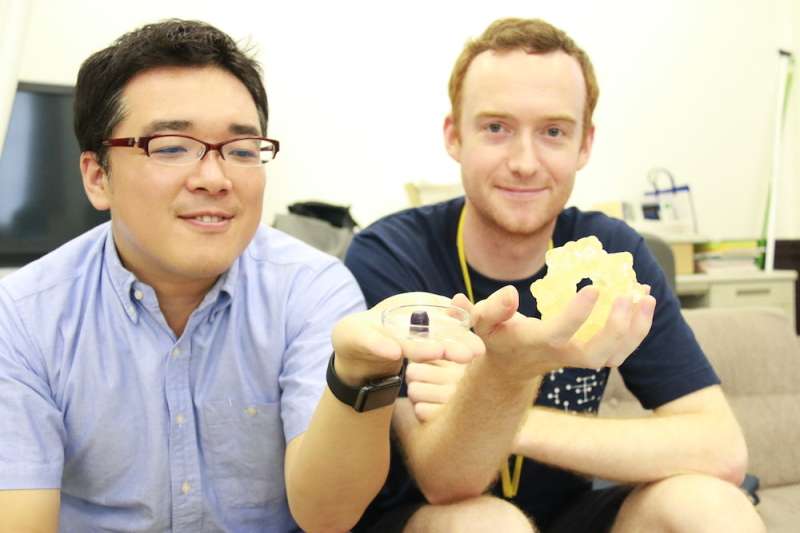Controlling the manufacture of stable aerogels

Kyoto University researchers have developed a new approach to control the fabrication of soft, porous materials, overcoming a primary challenge in materials science.
Porous, gel-like materials that have a stable structure despite their tiny cavities have a wide variety of potential applications. Building insulation, energy storage devices, aerospace technologies, and even environmental clean-ups can all benefit from incorporating light and flexible materials. Molecular assemblies called metal-organic polyhedra (MOPs) are leading contenders for these materials due to their interesting shapes and porosity. But fabricating materials from these assemblies with intrinsic and controlled porosity remains a challenge.
Shuhei Furukawa of Kyoto University's Institute for Integrated Cell-Material Sciences (iCeMS), with colleagues in Japan and Spain, found a way to control the synthesis of a porous gel through the self-assembly of MOPs using organic linkers.
They started with a cuboctahedral-shaped MOP formed of rhodium atoms linked with strong carboxylate bonds, which give it a high degree of structural stability. The MOPs were placed in a liquid solvent with organic 'linker' molecules to trigger the self-assembly process . The team found that gradually adding linkers to the solution and changing the solution's temperature allowed them to control the formation and size of the spherical particles that developed.
The researchers found that subtle changes in the reaction conditions greatly influenced the outcome of the reactions. When the team added a large amount of linker molecules to the rhodium MOP solution at 80°C and then rapidly cooled it to room temperature, a gel formed. The team then treated the gel with supercritical carbon dioxide. The gas replaced the liquid component of the gel, leading to the formation of an ultralight 'aerogel'.
"We envisage that by understanding the relationship between molecular-scale geometries and the resulting macroscopic shapes, a real advance can be made towards the development of soft matter that is both permanently porous and amenable to materials processing," the researchers conclude in their study published in the journal Nature Communications. Their findings could lead to the fabrication of soft, flexible materials that have permanent porosity, they say.
More information: Arnau Carné-Sánchez et al, Self-assembly of metal–organic polyhedra into supramolecular polymers with intrinsic microporosity, Nature Communications (2018). DOI: 10.1038/s41467-018-04834-0
Journal information: Nature Communications
Provided by Kyoto University




















